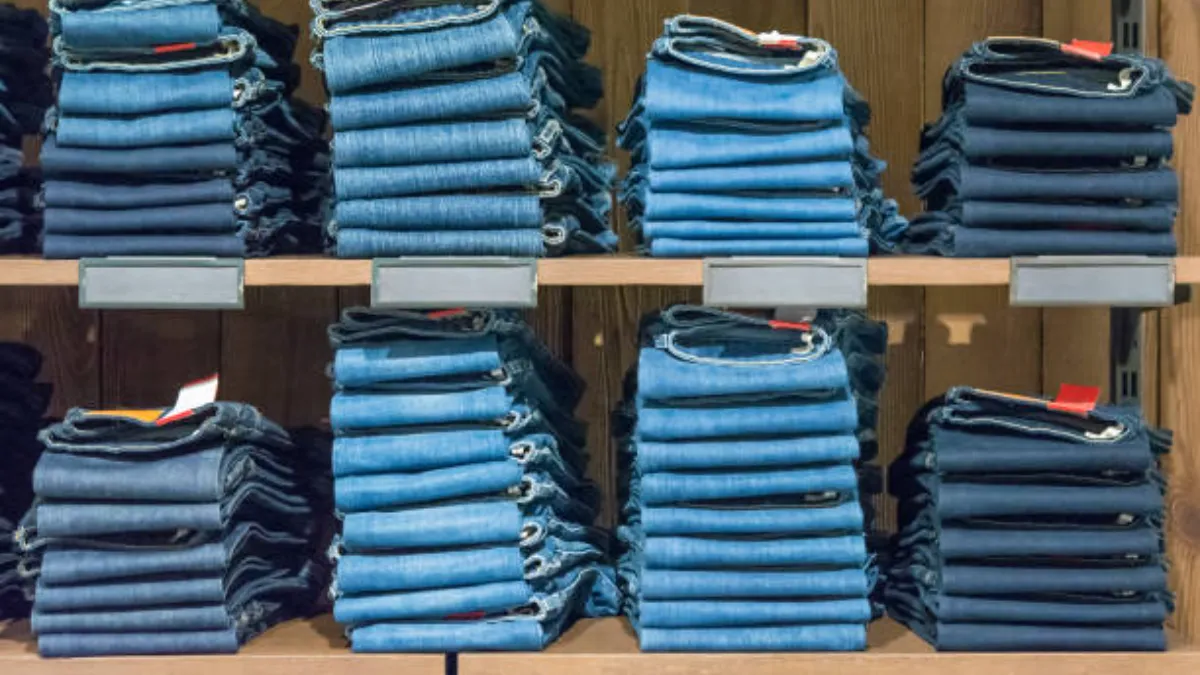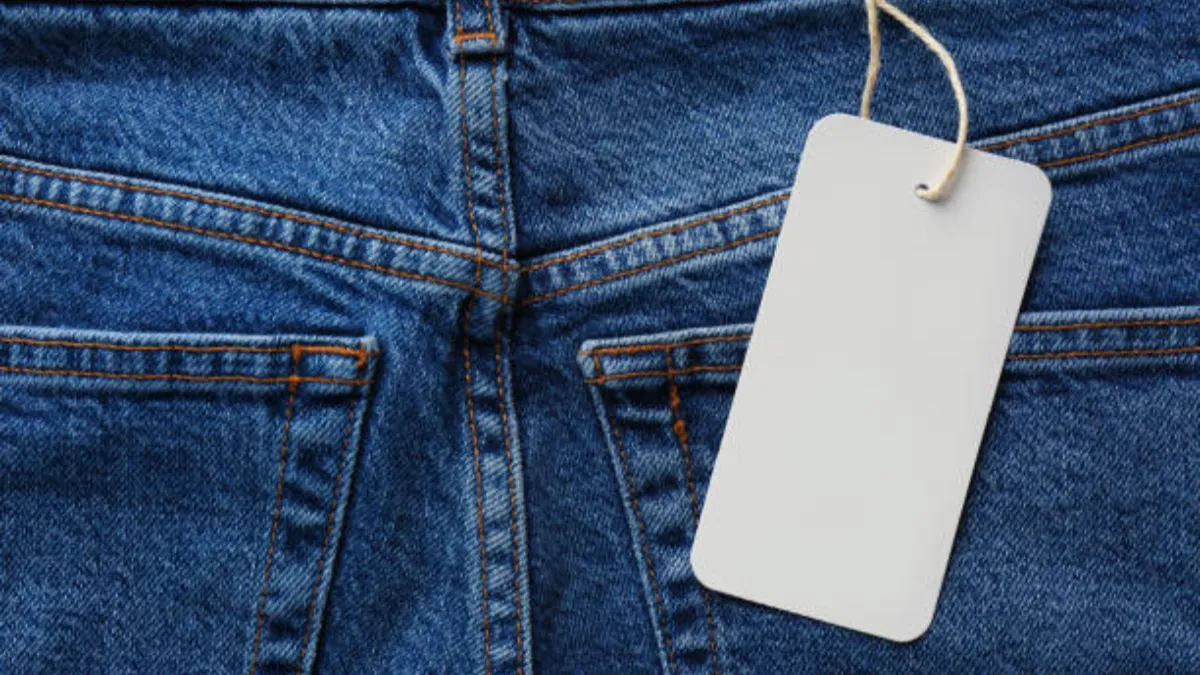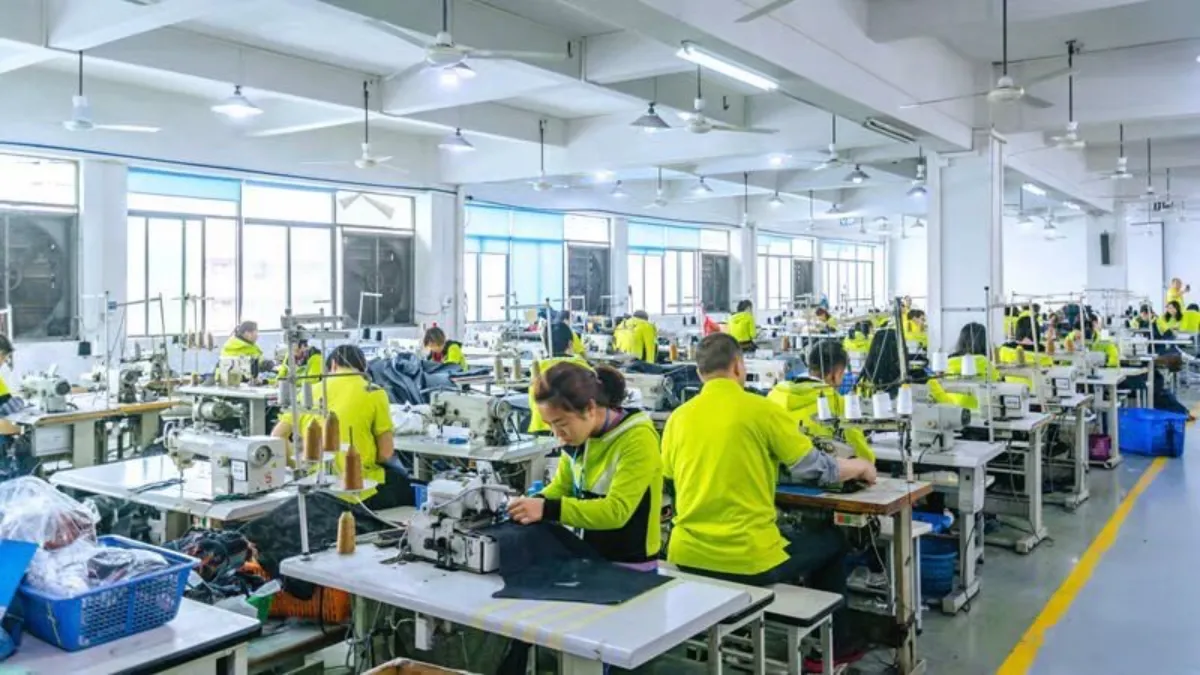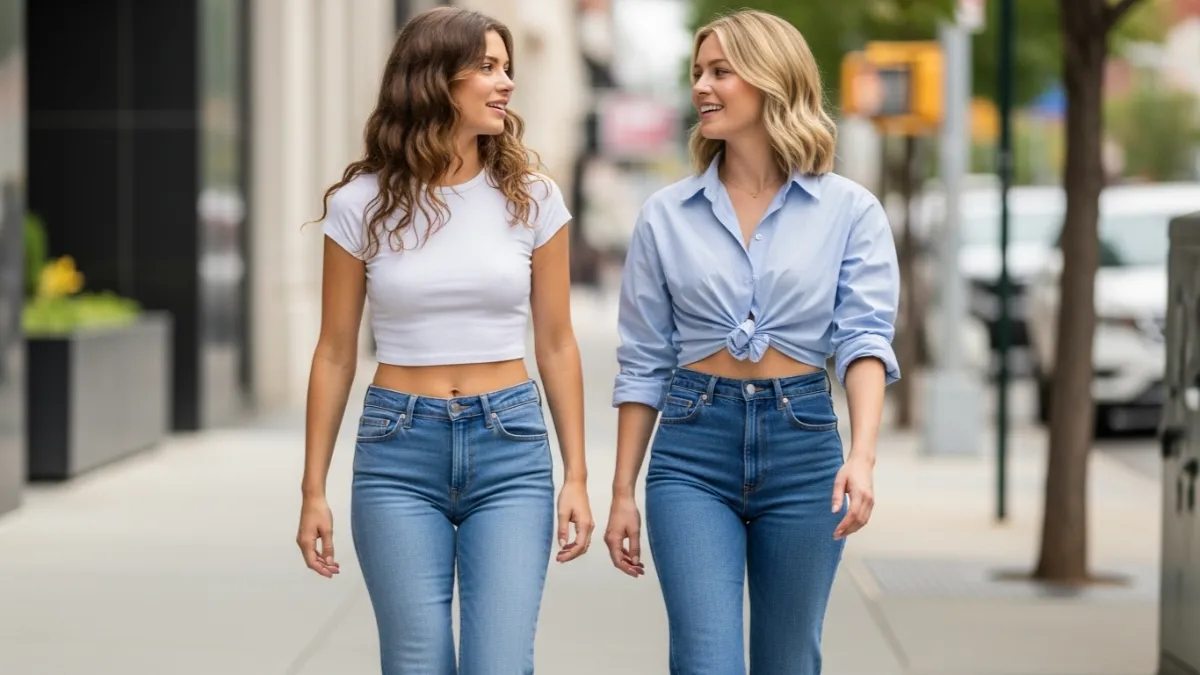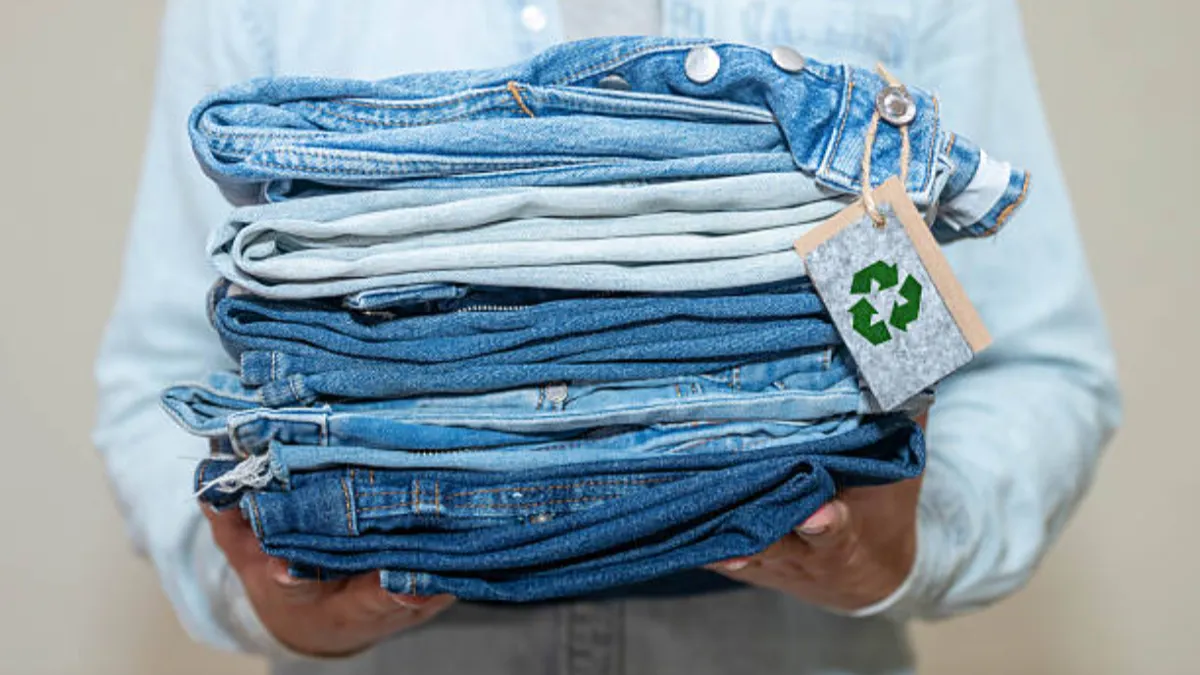Selecting between duck canvas and denim directly impacts the durability, Komfort, and total cost of your workwear program. This guide gives procurement teams and apparel engineers a concise comparison of weave structure, abrasion resistance, and breathability, showing how wind protection, Flexibilität, and fade behavior map to needs from heavy-duty uniforms to retail collections.
What Is Duck Canvas?

Duck canvas—also called duck cloth or cotton duck—is a heavy-duty plain-woven cotton fabric with a tight weave built for durability under stress. The name “duck” comes from the Dutch “doek,” meaning cloth, reflecting its long heritage. A common setup uses 2 yarns in the warp and 1 in the weft, producing a smoother, stronger face than standard canvas—resisting snags and maintaining appearance with repeated wear.
In sourcing, prioritize weave density and yarn quality, as these drive both longevity and comfort; mills skilled in precision weaving typically deliver more stable yardage, reducing inconsistencies in garment runs.
Grading and Key Properties
Duck canvas is classified using a grading system that indicates fabric weight, density, und Haltbarkeit. The most widely used method in the industry is the “Number Duck” system, where lower numbers correspond to heavier and stronger fabric. Some mills may also use letters or custom codes, but the principle is similar: the grade signals the canvas’s performance.
| Grade | Description | Typical Weight | Key Properties |
|---|---|---|---|
| 1 | Heaviest, most robust | 24 oz/yd² or higher | Extremely abrasion-resistant, very stiff, high durability |
| 2 | Heavy-duty | 18–23 oz/yd² | Strong, good shape retention, moderate stiffness |
| 3 | Medium-weight | 12–17 oz/yd² | Balanced strength and flexibility, easier to handle |
| 4 | Light-weight | 10–12 oz/yd² | Weicher, more flexible, lighter feel |
| 5 | Lightest | <10 oz/yd² | Highly flexible, breathable, suited for lighter garments |
Pros and Cons of Duck Canvas
This section highlights the main advantages that make it suitable for heavy-duty workwear, as well as the potential drawbacks that may affect comfort, Flexibilität, and production considerations.
Pros of Duck Canvas
- Durable and strong: Tight plain weave resists abrasion, tearing, and deformation.
- Shape retention: Garments hold their structure over time, reducing the need for replacements.
- Functional finishes: Can be treated for water or wind resistance without losing stability.
- Color stability: Maintains consistent appearance, suitable for uniforms and branded workwear.
- Long service life: Heavier grades provide extra protection in demanding environments.
Cons of Duck Canvas
- Stiffness: The fabric is less flexible and may feel firm in hot or active settings.
- Limited breathability: Denser weave reduces airflow, which can affect comfort in warmer conditions.
- Production challenges: Heavier canvas requires careful handling and specialized sewing equipment.
- Maintenance: Attracts dust and lint; needs regular cleaning to maintain appearance.
- Less suited for light garments: Its weight and rigidity make it less comfortable for casual or fashion-focused apparel.
Was ist Denim?
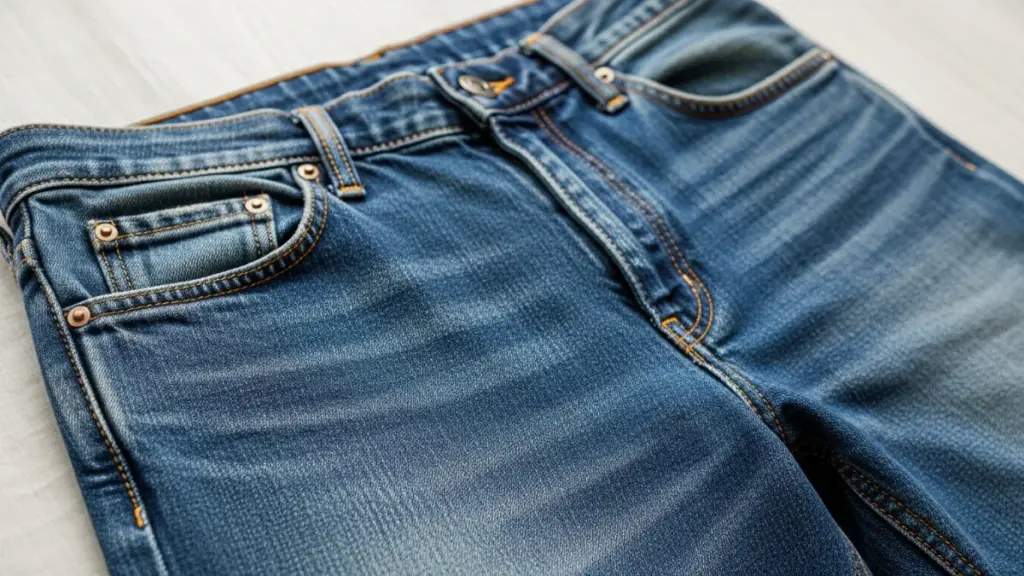
Denim is a cotton-based twill fabric that offers durability with comfort. Unlike duck canvas, denim emphasizes wearability and aesthetic appeal, while still maintaining sufficient strength for workwear and casual apparel.
Weave Structure
Denim uses a twill weave, typically a 3/1 oder 2/1 pattern, which creates the characteristic diagonal ribbing. This weaving method strengthens the Denim-Stoff while allowing some flexibility, making it suitable for garments that undergo frequent movement. The diagonal lines also contribute to the iconic denim appearance and support controlled fading over time. Twill weaving improves tear resistance compared to plain weaves, while giving designers the ability to produce both heavyweight and lightweight options for different garment types.
Material Composition
Am meisten Denim wird gemacht aus 100% Baumwolle, although blends with elastane or polyester are common to enhance stretch and recovery. Cotton provides breathability, softness, and natural durability. Stretch fibers improve comfort and allow garments to move with the wearer, which is particularly useful for active workwear or casual clothing. The choice of yarn thickness, spinning method, and fiber origin affects strength, Textur, and hand-feel, giving brands control over both performance and aesthetic qualities.
Dyeing and Washes
Denim production typically involves warp yarn indigo-dyeing, leaving the weft yarns undyed. This creates the classic blue fabric with a contrasting interior and allows for predictable fading patterns. Post-weaving, denim can undergo various washing techniques, such as stone wash, enzyme wash, or vintage finishing, to adjust softness, color depth, and visual appeal. These washes influence garment comfort and style, helping brands differentiate products while maintaining durability and overall fabric integrity.
Custom Denim Solutions Tailored for Your Brand
Partner with Guangzhou Changhong Garment for premium, umweltfreundlich Denim-Herstellung. Benefit from deep customization options, low minimum orders, and a vertically integrated process designed to bring your unique styles to life with quality and speed.
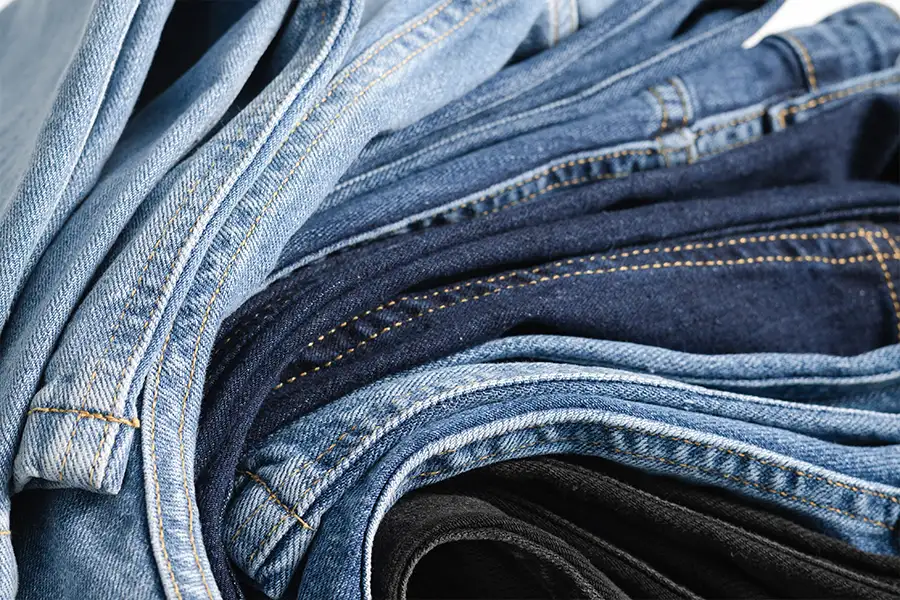
Pros and Cons of Denim
Denim combines durability with comfort and style, making it a popular choice for workwear and casual apparel. Understanding its advantages and limitations helps brands make informed decisions about fabric selection, balancing wearability, aesthetic appeal, and long-term performance in different environments and applications.
Pros of Denim
- Breathable: Natural cotton fibers provide airflow, keeping wearers comfortable in active or warm environments.
- Aesthetic appeal: Indigo-dyed warp and contrast weft create the classic denim look, which develops desirable fades over time.
- Versatile styling: Can be washed, dyed, or treated in multiple ways to suit casual, fashion, or workwear lines.
- Dauerhaft: Maintains strength and abrasion resistance, suitable for everyday wear and moderate-duty work garments.
Cons of Denim
- Lower wind resistance: Compared to duck canvas, denim offers less protection in harsh outdoor conditions.
- Color fading: Frequent laundering accelerates fading, which may not be desirable for strict uniform codes.
- Limited heavy-duty performance: Less suitable for high-abrasion environments without reinforcement.
- Production impact: Water- and energy-intensive processes may conflict with sustainability goals if not managed.
- Heavier finishes reduce comfort: Certain washes or treatments can add stiffness or weight, affecting wearability.
Key Differences Between Duck Canvas and Denim
Here is a table summarized the key differences between duck canvas and denim:
| Aspekt | Duck Canvas | Denim |
|---|---|---|
| Weave Type & Fabric Behavior | Plain weave with a smooth, dense surface; naturally stiff, wind‑resistant, and holds shape without stretching. | Twill weave with diagonal ribs; flexible and softer, developing moderate stretch over time. |
| Haltbarkeit & Komfort | Highly abrasion‑resistant for its weight and remains rigid under heavy use—built for industrial gear and utility wear. | Sturdy yet softens with wear, improving comfort while losing some rigidity over prolonged use. |
| Kosten & Supply Chain Factors | Lower cost per yard for comparable strength, using less cotton and requiring simpler finishing. | Greater cotton consumption and complex finishing; premium weights command higher prices and are more sensitive to raw material costs. |
| Sourcing & Procurement | Lower minimum order quantities with straightforward purchasing thanks to minimal finishing needs. | Typically higher MOQs and more involved procurement, often requiring specialty washes or treatments. |
| Preferred Applications | Best for workwear, industrial covers, and gear where structure, Haltbarkeit, and wind resistance are priorities. | Favored in jeans and casual wear where comfort, drape, and flexibility take precedence. |
Common Uses in Workwear and Fashion
Duck canvas and denim occupy distinct niches in workwear and fashion, with material properties guiding how brands deploy them—from rugged uniforms to casual streetwear. Drawing on our experience supplying both fabrics to global programs, the best results come from balancing abrasion resistance, Komfort, and consumer appeal.
Industrial and Heavy-Duty Workwear (Duck Canvas)
Duck canvas is favored for construction uniforms, manufacturing jackets, tool bags, and aprons. Its dense weave resists tearing, blocks wind, and withstands abrasive contact better than lighter fabrics. For large uniform programs, the combination of durability, lower replacement rates, and reinforced seams delivers cost savings over the garment’s lifecycle, keeping it popular in demanding occupational settings.
Lightweight and Casual Workwear (Denim)
In hospitality and retail uniforms, denim offers a balance of comfort and presentation. With its natural drape, soft feel, and gradual fading, it creates a friendly, stylish look while providing moderate durability. Customizable washes let brands fine‑tune appearance, which is particularly valuable for customer‑facing teams where aesthetic impact rivals functional performance.
Casual Fashion Segments (Denim)
Denim remains a cornerstone of casual fashion due to its adaptability and distinctive aging. Over time, changes in fade and texture add character, turning straightforward garments into signature pieces. Its familiarity allows designers to innovate in cuts and treatments without risking consumer trust, making it a reliable choice for seasonal collections.
Heritage and Utility-Inspired Fashion Lines (Duck Canvas)
Duck canvas serves well in collections that highlight longevity and structure. Its rigid profile keeps garments shaped, lending a utilitarian aesthetic that supports heritage‑inspired themes. Consumers seeking products built for extended use over trend‑driven turnover respond well to this messaging of authenticity and durability.
How to Choose the Right Fabric for You Projects?

Selecting between duck canvas and denim requires a clear understanding of how each fabric performs in real-world conditions and how those properties align with your goals. The smartest choice comes from balancing durability, Komfort, kosten, and supply chain dependability.
Assess End-Use and Performance Needs
Begin with the fabric’s intended role in the finished product. Duck canvas delivers high tensile strength and a tight weave that blocks wind, making it suitable for tool aprons, work tents, and outdoor gear exposed to heavy wear. Denim, with its softer drape and greater flexibility, adds comfort and style to garments requiring ease of movement. Also account for environmental conditions such as UV exposure, moisture, and cleaning frequency, since neglecting these factors can shorten product lifespan and impact customer satisfaction.
Evaluate Cost and Supply Chain Factors
Consider total landed cost rather than just raw fabric price. Duck canvas often uses less cotton, helping to lower material expenses, though specialized finishes like waterproofing can increase costs. Denim generally carries higher unit prices but supports premium positioning and stronger retail margins. Supplier flexibility on minimum order quantities is crucial for new launches, and choosing a vertically integrated manufacturer with robust finishing capabilities can reduce lead times and minimize quality control risks.
Testing and Quality Assurance Practices
Substantiate performance claims with data. Request fabric test reports on abrasion resistance, tear strength, and tensile performance, and run sample dyeing or finishing trials to verify colorfastness and hand feel after laundering. Leading suppliers operate under strict QA protocols—ISO9001 and BSCI certifications indicate reliable production standards. Skipping this step invites costly returns, warranty claims, and long-term brand damage.
FAQs
Which fabric lasts longer?
Duck canvas, with its dense weave and heavier yarns, delivers exceptional abrasion and tear resistance in demanding environments such as industrial sites or heavy outdoor use. Denim offers solid durability but prioritizes flexibility and comfort, making it better suited for extended wear with less mechanical strain. Decide whether maximum toughness or ease of movement is the higher priority in your use case.
Can canvas be softened or stretched?
Comfort can be enhanced through pre-washing, Enzymbehandlungen, or light mechanical abrasion. Duck canvas has minimal stretch potential, though it can relax slightly with repeated wear or specific finishing techniques. Professional mills often integrate softening finishes to achieve a more pliable hand without compromising structural integrity.
What’s the best use for denim vs canvas?
Denim is optimal for casual wear, fashion garments, and products requiring flexibility with varied finishing options. Duck canvas is ideal for workwear or gear where abrasion resistance and firmness are essential, such as tool aprons, outdoor packs, and protective jackets. Align fabric attributes with the garment’s physical demands and aesthetic objectives before finalizing production specs.
Which fabric costs more to produce?
Duck canvas generally incurs higher material and loom costs due to heavier yarns and tighter weaving. Denim pricing varies—lighter weights and large-volume runs reduce costs, while heavier constructions and specialty finishes increase them. Balance the required performance with target pricing and anticipated order volumes to identify the most cost-effective option.
How to choose suppliers?
Target suppliers with verifiable certifications and compliance to international quality and sustainability standards. Assess capabilities such as minimum order quantities, customization options, and turnaround time early. Request and evaluate samples before scaling, and select partners with direct experience in your fabric category to ensure reliability and consistency across batches.


